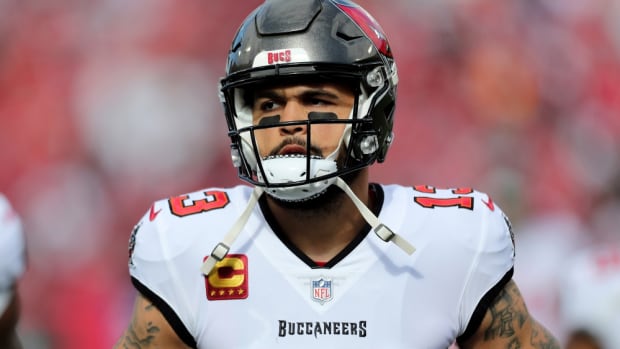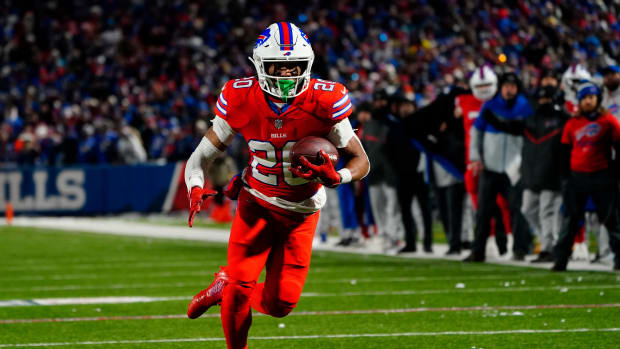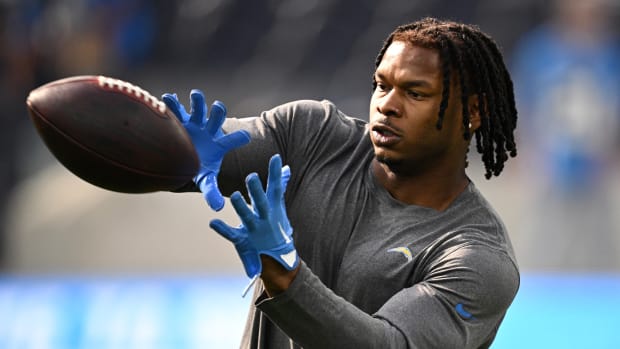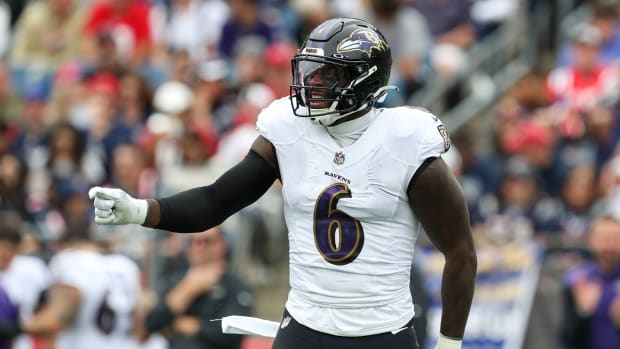The Battle for Third Down
Russell Wilson has not been a comfortable drop-back passer over the past two months. The Seahawks have masked this (somewhat) by leaning on their dynamic running game. Still, third-down "must-throw" situations are inevitable in every NFL contest, and the Seahawks have no chance of hoisting the Lombardi Trophy unless their second-year quarterback can convert at least a few on Sunday at MetLife.
The way to help a young, uncomfortable quarterback in "must-throw" situations is with defined reads. That’s when the quarterback’s target is predetermined or decided by a simple either/or post-snap look at the defense (if the leveraged defender goes here, the read is to receiver A; if the defender goes there, it’s to receiver B).
Seattle’s commitment to running the ball creates a lot of 3rd-and-medium situations. It stands to reason that coordinator Darrell Bevell has defined-read staples for this. Here are two of his most prominent.
In both instances, the play design got the ball out of Wilson’s hand quickly. When Bevell wants to prolong the play (either to give receivers enough time to stretch the field or to execute cross-field drag routes), he’ll put Wilson on the move. It’s not conventional on 3rd-and-medium because most moving pockets have a play-action element, and fake handoffs are less believable in obvious passing situations. But the benefit of putting Wilson on the move is yet another defined either/or read: to either throw or run. If it’s a cross-field pattern, the throw will likely have two options: a high crosser and a low crosser—particularly out of 3 x 1 sets, from which the Seahawks do a good job with multilevel route combinations. If they’re doing this and it’s not third down, the defense must be on high-alert for a deep shot, especially with Percy Harvin in the lineup. Harvin gives these concepts the added dimension of pre-snap movement and vertical potency.
What Bevell calls on 3rd-and-medium could hinge on how Broncos defensive coordinator Jack Del Rio chooses to play. Lately, Del Rio has been rushing three and putting eight into coverage, with the eighth man usually being a defensive tackle dropping from the line to cover the shallow underneath middle. That would seem to be a viable tactic, as it puts an extra sets of eyes on Wilson, which could help curtail his scrambling. It would also take away the quick slant to Tate.
At the same time, a three-man rush would allow Wilson to extend the play, which works to his strength. If Del Rio chooses to take this risk, he’ll insure it by spying the QB (likely with a linebacker). His other option would be to play zone across the board, which the Broncos, a man-centric team, rarely do. Then again, a zone would take away concepts like the wheel route to Baldwin.
Third-and-medium will be a chess match—and one that both sides have had two weeks to prepare for. Let’s not forget: it hinges on how players execute. Just because a coach draws it up doesn’t mean it will happen the prescribed way. This is why football is infinitely more exciting than actual chess.








































